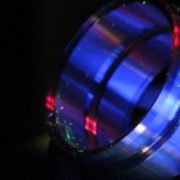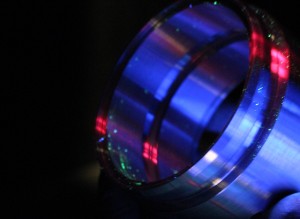Magnetic Particle Inspection
When looking for a reliable, economical testing method for detecting flaws and discontinuities in your magnetic parts without damaging the part in any way, a preferred method is magnetic particle inspection (MPI).
MPI is a nondestructive test method that detects linear, surface, and near-surface flaws in material that can be magnetized, or ferromagnetic material, such as cobalt, iron, nickel, or certain alloys. During MPI, small magnetic, iron particles are attracted to any defects on or near the surface of your parts.
Applications for magnetic particle inspection include many different industries, including automotive, power generation, medical device, and aerospace industries. Testing is done on a variety of product forms and at almost any stage in the component’s production cycle, including castings, forgings, and weldments.
MPI advantages include:
- Quick and simple application
- Ability to detect defects through thin coatings
- Highly sensitive to surface and slightly subsurface flaws that will appear on the test part
- Easy automation and high-volume production testing
- Less costly than other quality assurance testing methods
Limitations to MPI are:
- Part material must be magnetic
- Limited detection for subsurface indications
- The direction of the magnetic field must be accurate
- Complex test parts sometimes pose difficulty with magnetic properties
- Demagnetization is often required
Your parts are tested for defects on our wet horizontal machines following these basic steps:
- Surface preparation: Your part is cleaned of grease, oil, moisture, and other contaminants. PTI uses TriChloroethylene Vapor Degreasing, also used with the FPI method.
- Determine magnetic properties: Calculations are done to know the amount of current required to magnetize your part. Both the adequate strength and correct direction of magnetic field must be used.
- Magnetize component: Your part is magnetized with a magnetizing pulse that is applied in short bursts of a half second to improve particle mobility. It is then bathed with a light oil containing small iron particles which will line up along any defect.
- Visual inspection: A UV black light is used to look for defects that will create a leakage field. The iron particles will cluster at any flux leakage point, forming a visible indication to an otherwise undetectable defect.
- Subsurface flaw detection: Unlike FPI, MPI can show defects below the surface such as voids in a casting. Indications will lose definition as flaw depth increases.
- Demagnetize component: Special equipment that operates in the opposite manner of magnetizing equipment is used to reverse the magnetic field. Remaining magnetic fields can adversely affect machining and welding, and interfere with electronic equipment. Test oil is then removed by vapor degreasing.
PTI gives you multiple solutions to your special processes in one stop. In addition to our Nondestructive Testing, we offer Precision Cleaning, Shot Peen, and Adhesive Bonding.
This is the fourth (and final) in a series providing detailed information on the special processes provided by PTI.
Part One: Dry Film Lubrication Gives Critical Long-Term Protection
Part Two: Get Quality Control for Your Parts with Nondestructive Testing
Part Three: Liquid Penetrant Inspection Is Economical and Versatile


